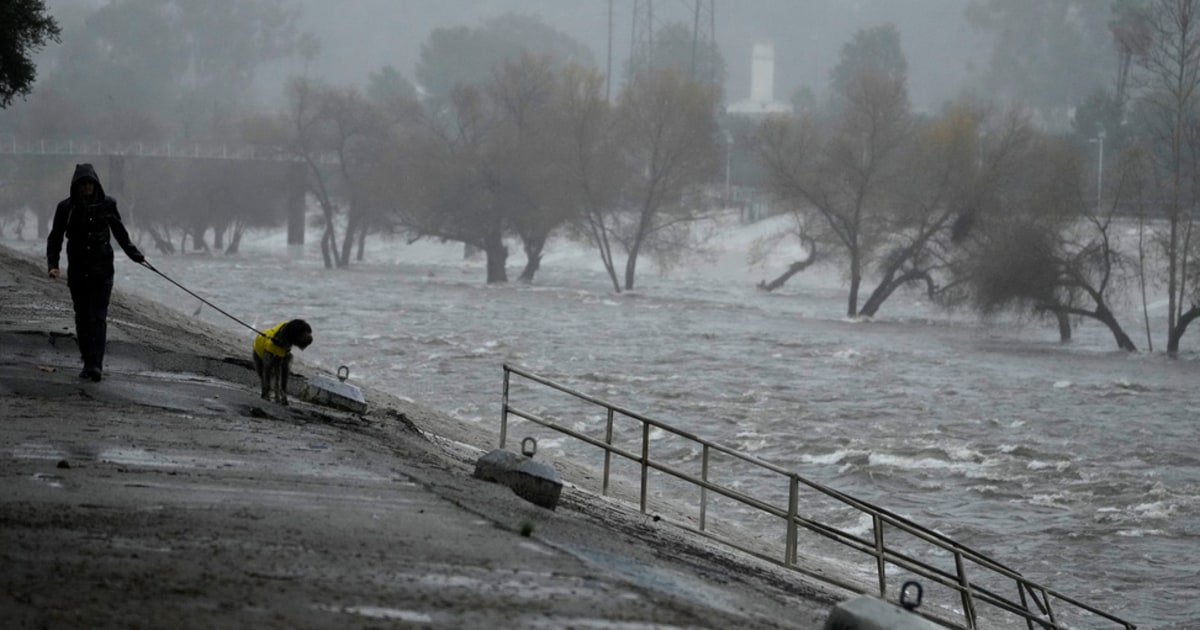By John Antczak -
The Associated Press
After a dry start to winter, California's rainy season has finally gotten underway.
December downpours sent water rushing through the streets of coastal Ventura County and the city of Santa Barbara.
Flash flooding occurred in San Diego in late January, and earlier this month two consecutive storms fed by atmospheric rivers arrived, causing wind damage in Northern California and hundreds of mudslides in Los Angeles.
Another storm hit the region over Presidents' Day weekend.
Frequent deluges have prevented the return of the drought that has hit the state for the past decade.
Some areas of California are so wet that even Death Valley National Park, a traditionally dry area, has a lake large enough to be kayaked.
Even so,
last year's heavy rains are not expected to be repeated
.
In the mountains, too, it hasn't snowed as much.
Here's an overview of how winter is going in California so far:
A man walks along the Los Angeles River on February 4, 2024, in Los Angeles, California. Associated Press
Has so much rain been beneficial?
Downtown Los Angeles has received nearly 17.8 inches (45.2 centimeters) of rain, more than an entire year's worth of precipitation, which runs from October 1 to September 30 of the following year.
This is already the fourth wettest February in the city center since weather records began to be kept in 1877, according to the National Weather Service.
But although rainfall
has reached historic levels in Southern California
, it remains to be seen whether the year can be considered very wet for the state as a whole.
Northern California is just approaching its annual average rainfall, with a month and a half left in the wet season, which “makes it very difficult to be 'extremely wet,'” said Jay R. Lund, deputy director of the Center. of Watershed Sciences at the University of California, Davis.
“We've had enough rain now that it's not a deep drought year, and the really wet years are a lot wetter than this one,” Lund said.
What happened to the snow?
The vital Sierra Nevada snowpack, which normally supplies about 30% of California's water when it melts, has recovered somewhat after a slow start.
According to the state Department of Water Resources, the water content of the snowpack on Wednesday was 86% of normal amounts to date and 69% of the average for April 1, when it normally peaks.
[Authorities join forces to put out the forest fire on the Agua volcano in Guatemala]
On January 30, the water content was only 52% of the average for the date, a far cry from what it was a year earlier, when it was around 200% of its average level, thanks to repeated atmospheric rivers that drastically ended
to the three driest years in the state's history
.
Were the reservoirs filled?
Even with the slow start to the current rainy season, water storage in California's major reservoirs has been well above average thanks to last year's historic snowpack.
Some reservoirs have been releasing water into rivers to make room for rainfall levels left by storms and prevent flooding in areas below waterways.
The Department of Water Resources announced Wednesday that the State Water Project expects public water agencies serving 27 million people to receive 15% of ordered supplies, up from the initial 10% allocated in December.
The department specified that the evaluation does not include the impact of this month's storms, and that allocations could be reviewed again in mid-March.
Lake Oroville, the State Water Project's largest reservoir, was
at 134% of its average year-to-date capacity
, but the department said the State Water Project's northern California headwaters saw below-average rainfall due to to the storms of the last two months.
Contractors for the Central Valley Project, a federally run system that supplies major agricultural districts, will also receive 15% of their requested water supplies, federal officials said Wednesday.
But that situation could change if more storms occur.

